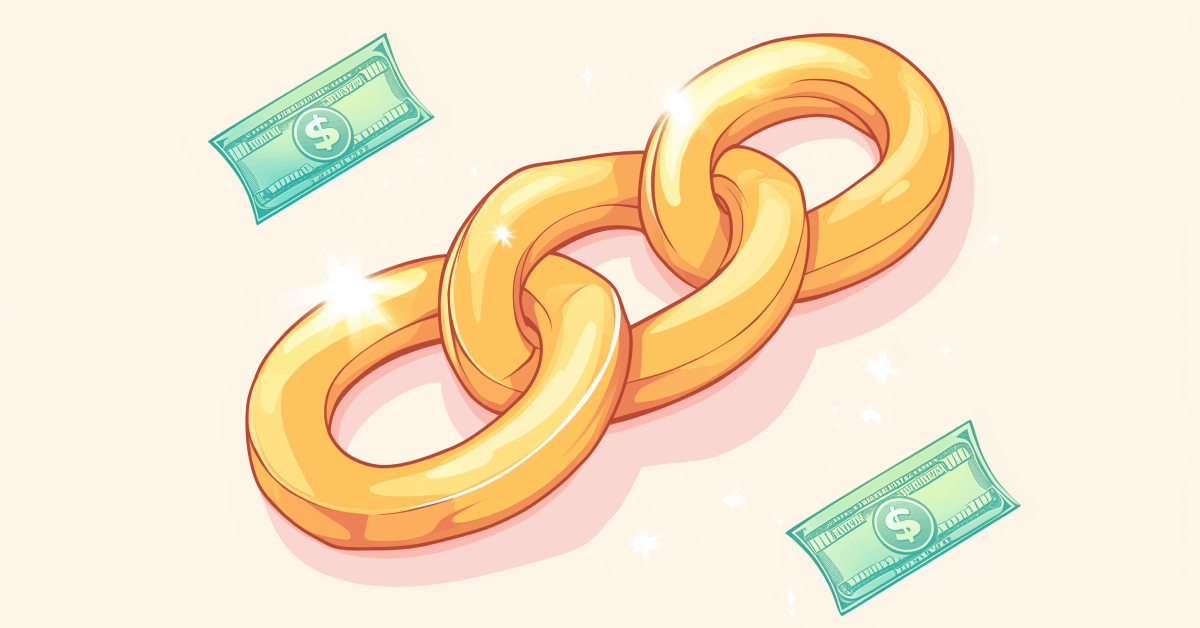
What is Link Equity?
Link equity is the value of a link and how much SEO power each link passes to your own website from the URL it's linking from.
Some people also refer to link equity as link juice.
Why is Link Equity Important?
Link equity plays quite a big role in helping your website rank higher in search engines like Google and Bing.
You can think of link equity as a kind of "authority boost" that your site can receive from other websites.
When reputable websites link to yours, they pass on some of their authority or "equity," which helps search engines see your site as more trustworthy and valuable.
Although I run the risk of stating the obvious, it's your goal to get as many high equity backlinks as possible.
Because they're more powerful, they help to improve your SEO (whether that's increasing your keyword rankings or boosting search traffic), and boost overall search visibility.
In a nutshell, links with lots of equity are any SEO and marketer’s dream.
Contrary to popular belief, not every backlink is a good backlink and not all backlinks are created equal.
Some links are more valuable than others (in other words, they have higher link equity)—these are the ones that make a real difference to your rankings and overall link profile.
Now that you have a better idea of what link equity is, let’s take a look at all the elements that determine link equity and a backlink quality.
What Determines Link Equity?
1. The Link Must be External
External links have more link equity than internal links.
In fact, you've got an extremely slim chance of ranking without them.
Research by Backlinko found that the number one position in the search results has 3.8 x more backlinks than positions two through 10.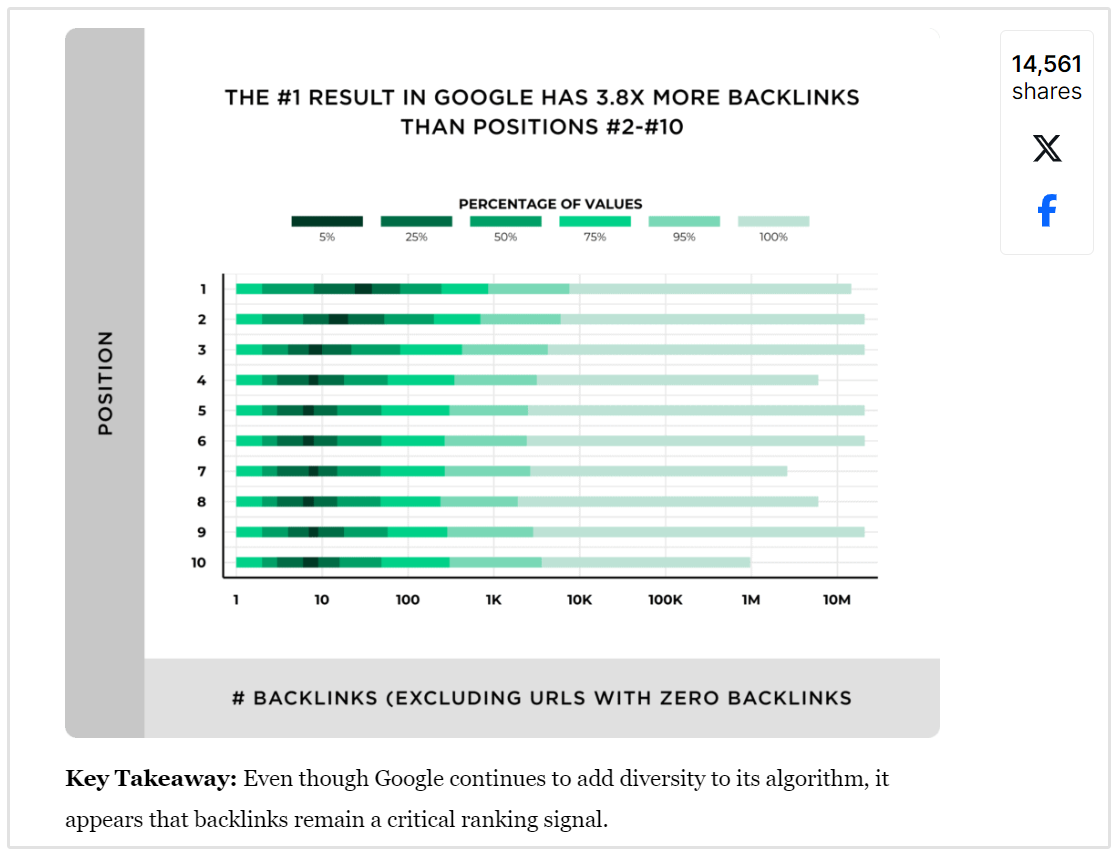
It's quite interesting why external links have higher link equity.
It's all to do with Google's main goal: to show the best, highest quality results for any search query.
It makes sense then, that a website with more external links is more likely to offer high-quality content.
People link to content that they enjoy and find valuable, so if a site has lots of backlinks, Google tends to rank it higher.
Essentially, a site with more external backlinks means other websites trust it, and reinforces that Google should too.
So while an internal linking strategy is still important, make sure you're spending the majority of your time building external links from third-party websites.
2. The Link is from an Authoritative, High-Quality Domain
Now let's start getting into the specifics of high equity backlinks. This is where "not every backlink is a good backlink" really starts to come into full force.
There are plenty of places to get external links, but to get an external link that's also high quality and authoritative is a lot more difficult.
It requires time, research and outreach. And the success rate is rather low.
Because these links are so difficult to get, they carry a lot of value.
We prioritize links from industry leaders, respected publications, and sites with high traffic and engagement metrics. In essence, a single link from a top-tier domain can often have more impact than multiple links from lower-authority sites.
- Max Shak, Founder & CEO of Nerdigital
To assess the quality of websites that you're researching for link building, you'll want to look at metrics like Domain Strength (for the whole domain) and Page Strength (for a single page on the domain).
These are both scored out of 100. A score of 30+ is a pretty good indication that the website or page is high quality, while 50+ indicates a top-tier site.
You can quickly check the Domain and Page Authority of multiple sites/pages at a time with SEOptimer’s Backlink Checker.
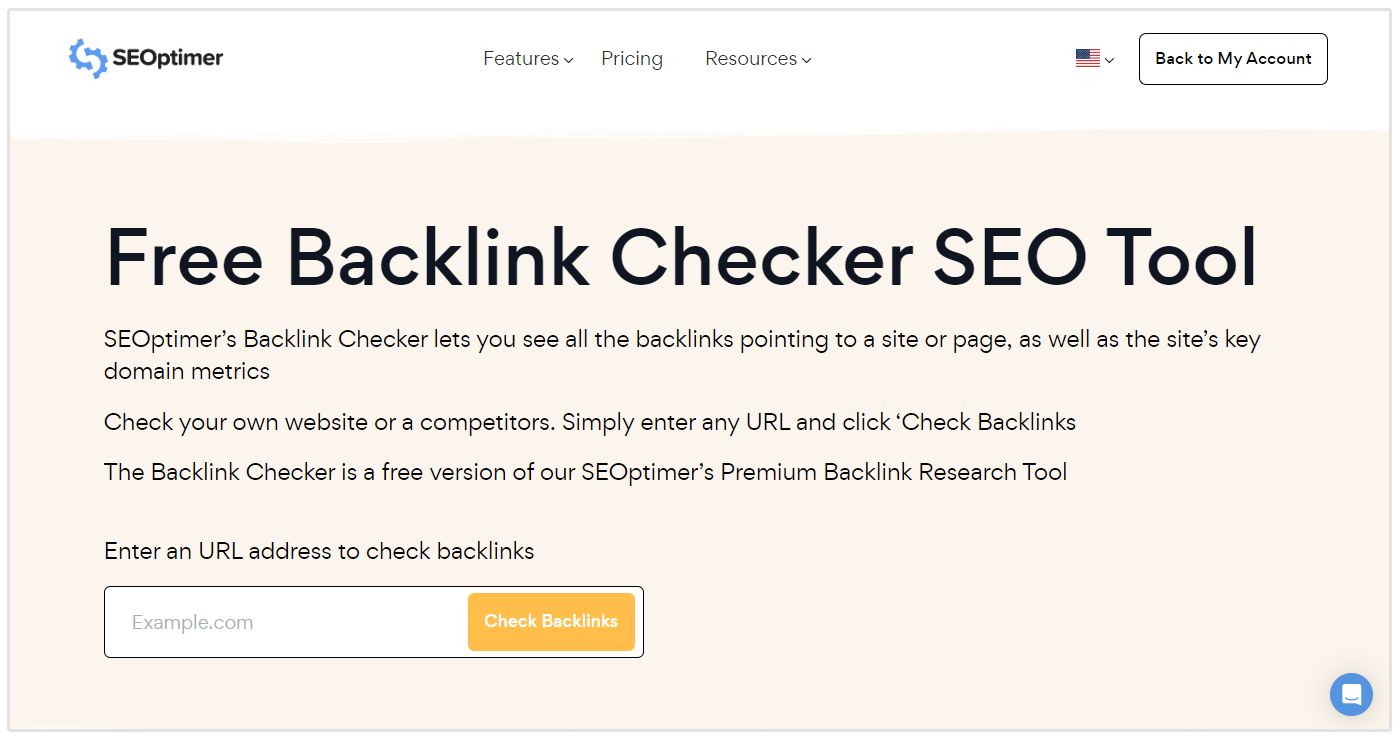
Just enter the URLs you want to check and hit "Check Backlinks" to view any website’s link profile and domain metrics.
For instance, let’s say I’ve got a website in the gardening niche, and I’m looking to get a link from Succulents and Sunshine.
By adding their domain to the Backlink Checker, I get a backlink summary of the website.
This includes metrics such as:
- Domain Strength
- Page Strength
- Total Backlinks
- Referring Domains
- Nofollow Backlinks
- Dofollow Backlinks
- Top Backlinks
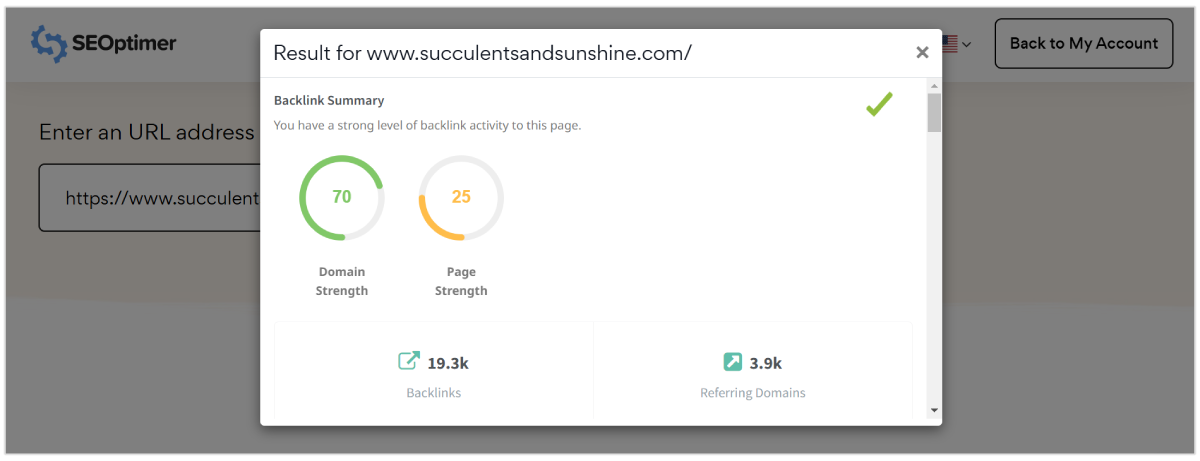
3. The Link is from a Popular Page with Many Backlinks
Found a high-quality site with high Domain Strength?
The next thing you need to investigate is the number of external links pointing to the page you want to get a link from.
If a page is getting a lot of links it must mean the site is offering some value.
So, if you're getting a backlink from a well-linked-to page, it has more link equity and weight in Google.
But you shouldn’t just look at the number of backlinks pointing to a domain. In addition, these links need to be high-quality.
A website can be getting lots of links, but if these are low-quality, then you won’t be getting much link equity from the domain.
You can check the total number of backlinks pointing to a website using our Backlink Checker tool.
As I mentioned, Total Backlinks is one of the metrics that you can view when analyzing a website’s link profile.
Our Backlink Checker also shows the Top Backlinks for the domain that you’re checking. These are the highest value links pointing to your site.
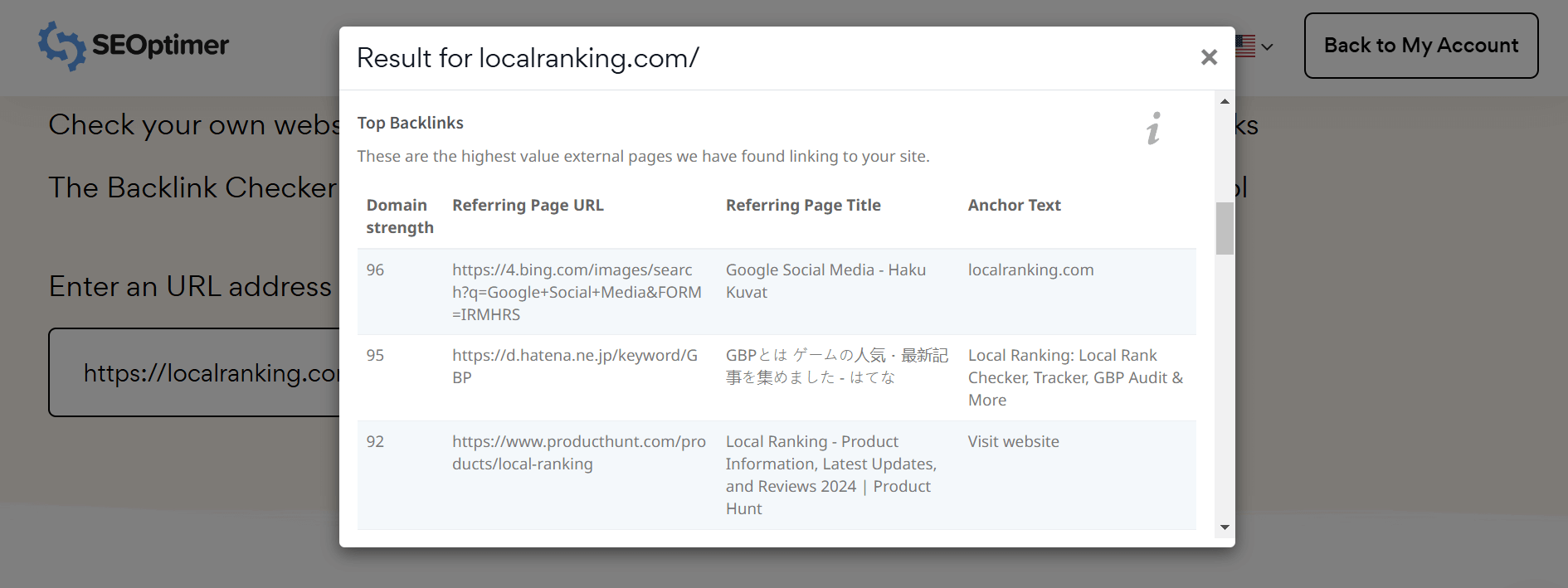
For instance, in the above screenshot you can see a link from Product Hunt and if you scroll down further there are links from authoritative sites such as HostPapa, Good Firms, MailMunch, and more.
Remember, Google wants to show the best results from the best websites.
Here are two key questions to ask yourself to evaluate the link equity metric:
- How many backlinks do they have?
- Are their backlinks from popular, authoritative domains?
If so, the site might be a good addition to your link building target list.
You can also check social shares of a specific page, to get an idea of how popular it is with its audience.
SharedCount is a great tool for this.
Remember that the more backlinks and social shares a website has, the higher its overall link equity.
4. The Link is Contextual
As you might know, there are tons of places to get links from, including:
- In the body of text (contextual)
- Author bio sections
- Website footers
- Blog sidebars
But nothing is straightforward in the SEO world, so of course, some of these are more valuable and have more link equity than others.
The best type of backlink with the most link equity is contextual links placed as high as possible within the content.
Working with a SaaS client in 2023, I landed guest posts on technology websites with a DR between 60 and 85. The links in the first two paragraphs generated 312% more referral traffic than those at the bottom.
- Sheraz Ahmed, Founder of HARO Links Builder
Here are an example from my recent guide to Amazon SEO:

Contextual links, also referred to as "in context" or "in body content" links, look the most natural.
They hold the most link equity because they're part of the main content on the page.
Search engines place more value on links directly within the content, than irrelevant links that are splashed across the sidebar or buried in the footer of every post.
Here are the three best methods to add backlinks that have high link equity to your arsenal:
A. Contribute Guest Posts to Relevant Sites
Over the years, guest blogging has gained a notorious reputation.
Many site owners assume it's a tactic only used by spammers and that's usually due to the way they go about guest posting.
But trust me when I say it can have its benefits if you do it correctly.
Just check out this case study, where Buffer grew their traffic dramatically using guest posting.
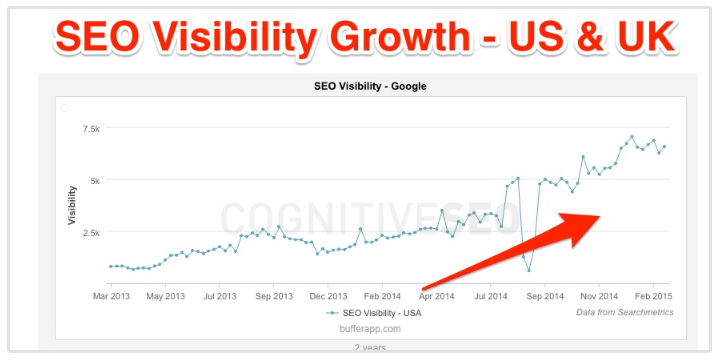
So how do you create successful guest posts?
Here are some key ways to create guest posts that add to your link equity:
- Are genuinely great pieces of content.
- Are published on websites with legit traffic, and an engaged audience with similar interests to your own target audience.
- Contain contextual author bios.
Check off all three and you've got yourself a great backlink via guest posting.
B. Design and Promote Unique Infographics
You can also build contextual links using infographics.
The idea is to write a piece of content and publish it as a blog post.
Then, use a tool like Canva, Venngage or Lucidchart to design an infographic with the same information.
Save the infographic to your PC with a keyword-rich name, and upload it to your website with the same alt text.
This will help Google understand what the photo is about and what it should rank for, giving you a nice image SEO boost.
Finally, use your infographic as ammunition to secure contextual links.
C. Create and Distribute Press Releases
Have you recently announced interesting company news that people in your industry would be interested in?
Whether you've hired a prominent new member of staff, secured a huge client, moved offices or been nominated for an award, write up a press release and spread the word.
Collect the email addresses of journalists who have covered similar topics in the past, and send them a pitch.
You'll get a contextual backlink if:
- The journalist is interested in the story
- And you've included a link to your website in the press release itself
Just like Printerland did when they sent a press release that was picked up by journalists at PA Life.
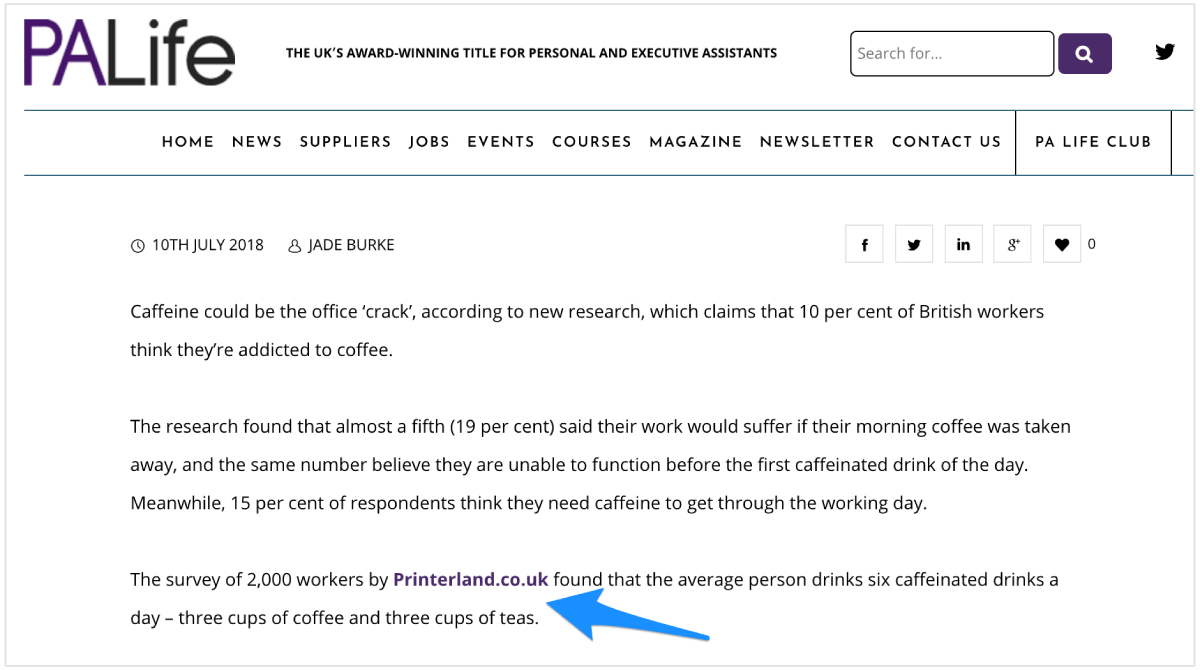
5. The Link's Anchor Text Uses the Keywords Naturally
Anchor text tells Google exactly what the page being linked to is all about.
Here's an example of an anchor text in our article on agency metrics.
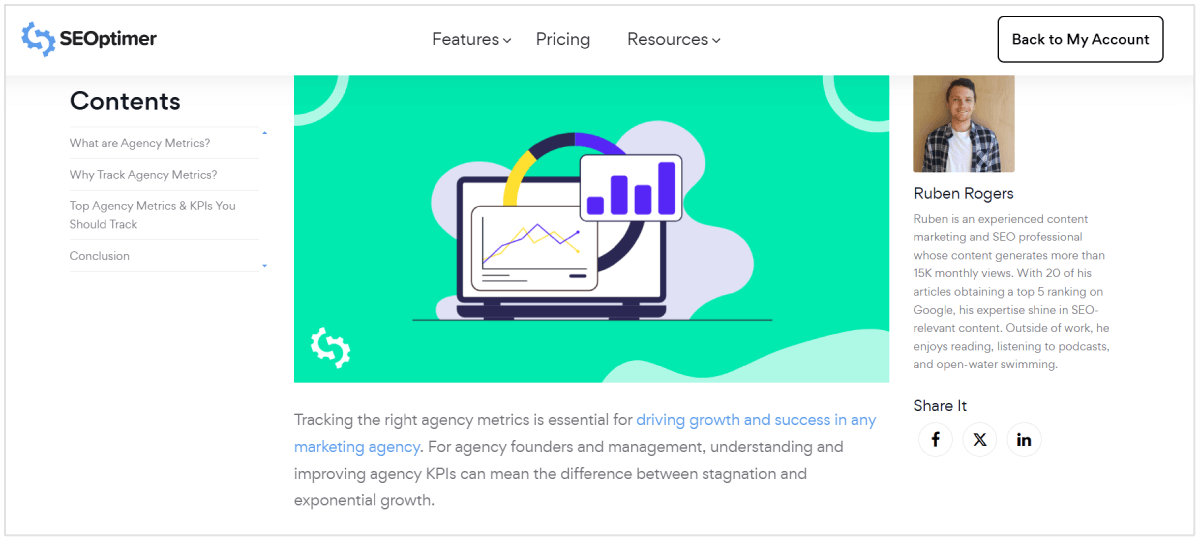
But did you know that optimized anchor text holds more link equity than text that isn't optimized for SEO.
If the keyword you're targeting on the page itself is also in the backlink anchor text, it tells Google that the two are related—and that it should value it more.
So, when building high equity links, make sure you know what keyword you're targeting with those links.
That's usually:
- A long-tail keyword for blog posts
- A short tail keyword for product, category or homepages
But like all things in SEO, there has to be a balance.
Under the Penguin algorithm update, Google can penalize websites for building too many backlinks with exact match anchor text.
Thousands of backlinks with exactly the same anchor text look unnatural.
That's why it's important to diversify the anchor text you're using when building links.
From personal experience, I know that using anchor text effectively increases the power of a link. My goal is to keep the anchor text natural and relevant to our target keywords, while also maintaining balance. I often vary the anchor text to avoid exact-match anchors. Google allows only so much leeway with exact matches, and relying too heavily on them can be detrimental. Therefore, diversifying anchor text makes sense for maintaining balance.
- Darryl Stevens, CEO at Digitech Web Design
Having said that, it's still possible to build backlinks with lots of link equity using this technique.
You'll just need to find similar keywords that relate to the page.
Let's say that we wanted to build links to a page about free SEO tools, for example.
Instead of using "free SEO tools" as the anchor text for every backlink we build, we could use variations like:
- tools that are free for SEOs to use
- free tools for SEO
- free SEO tools for marketers
- check out these free SEO tools
- find free tools for SEO experts here
Notice how they're all similar, but not exactly the same?
6. The Link is from a Unique Domain
If you've built a strong relationship with the editor of an authoritative website, it can be tempting to create 10 or 20 backlinks pointing from their site to yours.
An easy way to boost your backlink numbers, right?
But it certainly isn't the best way to boost your link equity.
It's better to have 100 links from 100 different domains, rather than 100 links from one domain.
This is because search engines view these unique websites, also known as "linking domains" or "root links," as more valuable.
If you've got 10 links from 10 different pages on the same website, that counts as just one root link.
But if you've got 10 links from 10 different domains, that counts as 10 root links. So it makes sense to get backlinks from unique domains wherever possible.
A collection of root backlinks protects your website, too.
Let's say you've built 100 links from a single root domain, for example. If that site were to:
- Get penalized by Google, you'd be at risk of being penalized, too.
- Shut down, you'd lose a ton of backlinks (and the time you spent building them would be a total waste).
As a general guideline, aim for 2-3 backlinks per unique/root domain.
It's a better use of your time to diversify your backlink profile and add more root domains to it, rather than put all your eggs in one basket and focus on just one or two websites.
7. The Link is Followed
These days, most big publishers such as HuffPost, Forbes, Entrepreneur and Inc add a "rel=nofollow" attribute to their external links.
It tells Google not to associate their site with the one they're linking to, meaning it has very little link equity.
To find out whether your link has the “nofollow” attribute, just right-click the anchor text of your backlink and select "Inspect."
A section of the page's code will pop up in another box.
If you can find the "rel=nofollow" code, I'm afraid it's a low equity link. For example, check this link from a post I wrote on HuffPost, as you can see in the right of the screenshot, the link is a “nofollow” link.

But don't be disheartened.
You're able to multiply the link equity nofollow backlinks have by reaching out to the publisher, and asking them to consider removing the attribute and making it a followed link.
Disclaimer: This tip might only work for smaller websites, but there's no harm in asking.
Going forward, when you're attempting to build new high equity backlinks, check out the website and see whether their external links have the "rel=nofollow" attribute.
If they do, it might be best to leave them off your priority list for the minimal link juice they pass through.
8. The Link is Live
The final thing to check for maximum link equity is pretty obvious, but you need to make sure the link works.
If you've recently moved or deleted a page that has a lot of backlinks pointing to it, you could be missing out on some valuable link equity.
For example, if you have a blog post on "How to create a custom chatbot" but you delete the page, any backlinks pointing to the original blog post will take users to a 404 error page.
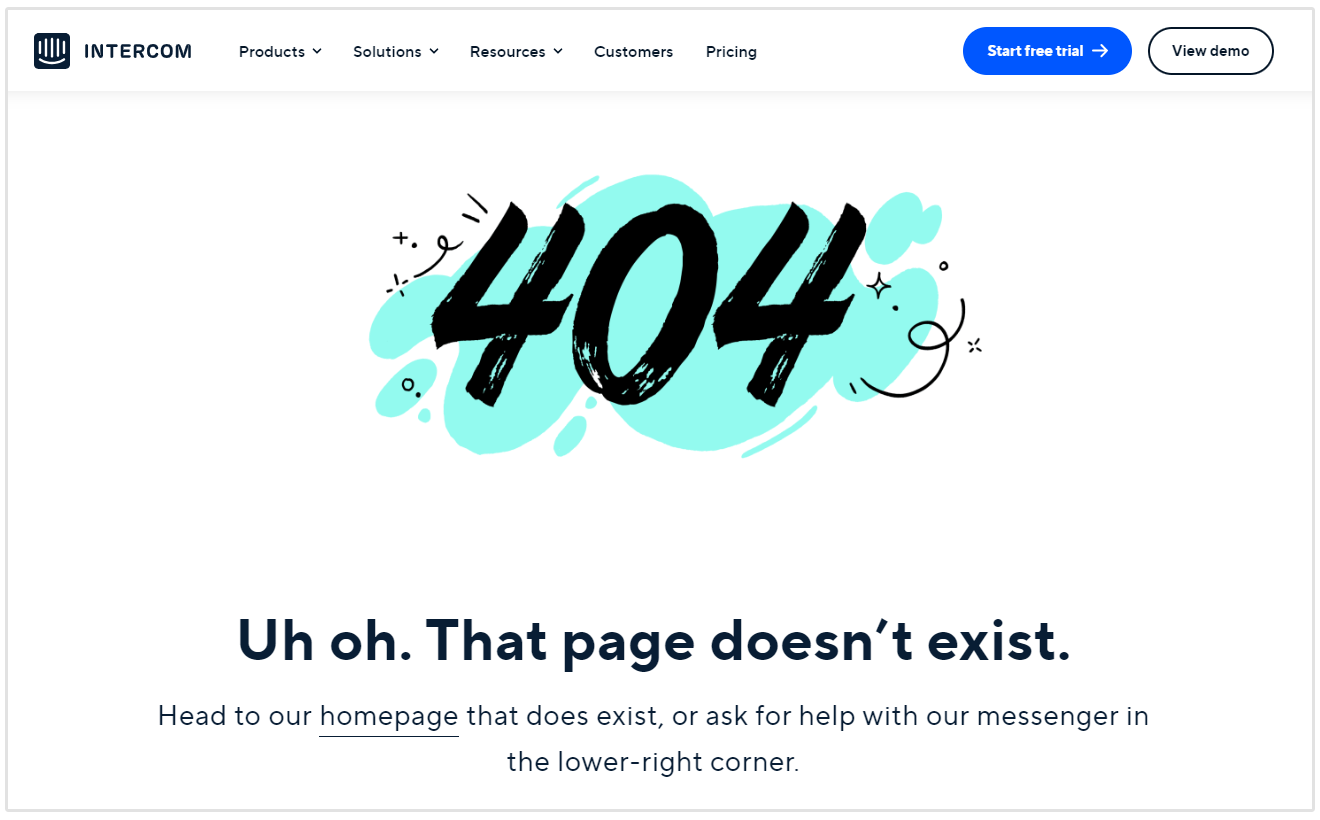
That doesn't do any favors for user experience, nor does it help Google spiders to follow the path. It stops them in their tracks.
You don't need to waste your high-value backlinks every time you move or update your URLs, though.
By redirecting them using a permanent 301 redirect, you'll pass anywhere between 90-99% of the original link's equity.
If you’re using WordPress, you can install a plugin called Redirection (for WordPress), and automatically redirect anyone who clicks the deleted URL to its replacement URL.
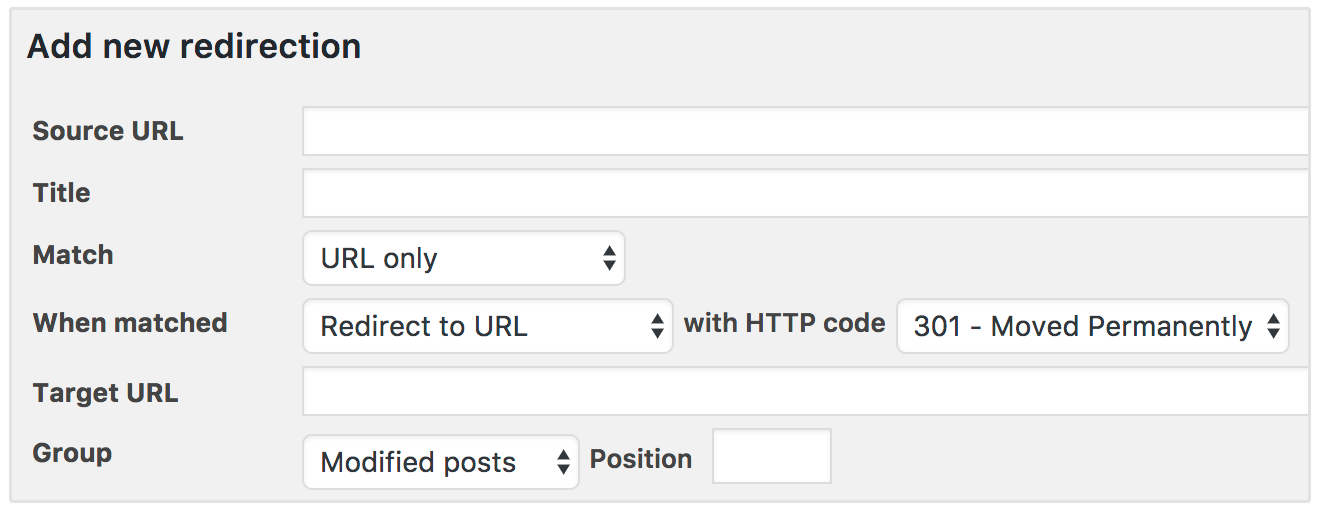
The only catch? You'll need to direct people to the next, most relevant page on your website.
For example, if your "SEO for beginners" blog post has been deleted, add a 301 redirect to another blog post on SEO tips, or your SEO services page, rather than just your homepage, to improve user experience.
It's frustrating when you click a link and arrive somewhere totally different than what you expected.
So don't make your audience do the same when they follow a link to your website.
9. Number of Outgoing Links
The number of outgoing links on a referring domain can impact the amount of link equity passed to your site.
When a domain has a large number of outbound links, the link equity or "authority" it can pass to each linked site gets divided among all those links.
This dilution means that a link from a site with fewer outbound links can potentially provide more link equity to your page, as it's not sharing its authority across numerous other sites.
In other words, a link from a site that selectively links to a few trusted sources tends to pass stronger link equity than one that links out to many different sites.
Let's take a look at an example of this. Imagine you've got a website selling cookware online and you want to build some links to one of your product pages.
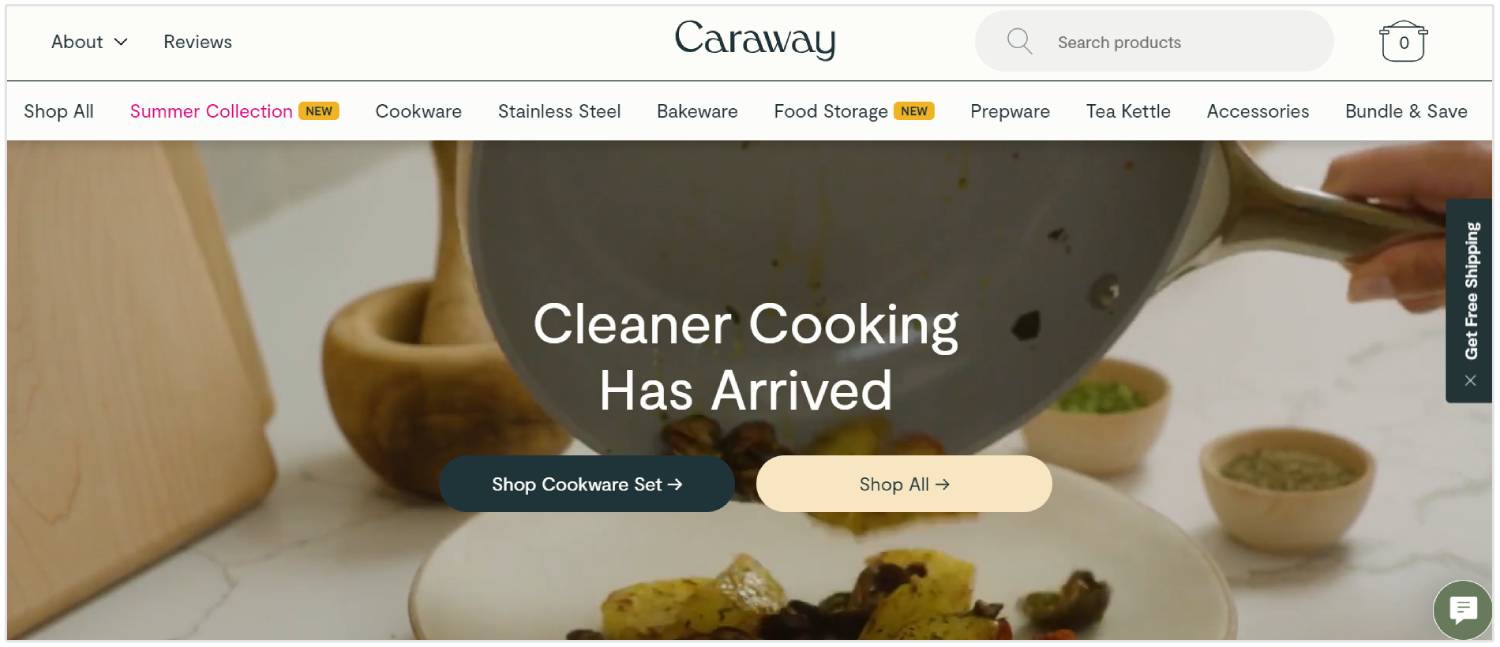
A link from a niche specific website like Food & Wine would be better compared to one from a news publication like Vice because the former likely doesn't like out to as many websites as the latter.
You can check the number of outgoing links that a website or specific URL has using SEOGraphy's External Links Checker tool or any other outbound link checker.

When analyzing potential link opportunities, it's helpful to consider not just the authority of the referring domain but also the number of outgoing links it has.
Remember to Diversify Your Backlink Profile
Before you rush off to build tons of high equity backlinks, you should always ensure that your backlink profile looks natural.
Neglect this part of your link building strategy and there's a high chance you'll spend the next six months trying to remove a Google penalty.
Google rewards natural sites, but gaining too many high equity links can look suspicious.
Link Equity FAQs
Is it possible to measure link equity?
No, you can’t directly measure link equity. Link equity is a concept that helps SEOs understand how links from other sites may boost a page’s authority and ranking potential.
While there isn’t a specific metric for link equity, metrics like Domain Strength, Page Strength, and others from SEO tools can give you a general idea of a page or site’s authority, which is influenced by link equity.
However, these are estimates and should be used as general indicators rather than exact measurements.
Does every link pass link equity?
No, not every link passes link equity. For example, links marked with a “nofollow” attribute tell search engines not to pass authority from the linking page to the linked page.
Additionally, links from low-quality or spammy sites might pass little or no equity and could even harm your site’s reputation if there are too many.
Is link equity and PageRank the same thing?
No, link equity and PageRank are not exactly the same, though they are related concepts.
PageRank is Google’s original algorithm that measured the value of pages based on the number and quality of links pointing to them. It helped Google determine how important a page was in relation to others.
Can I inherit link equity from other websites by linking to them?
No, linking to other websites doesn’t allow you to inherit their link equity. Link equity flows from one page to another through inbound links, not outbound links.
Wrapping Up
As you can see, building strong backlinks with lots of link equity is a tough nut to crack.
You'll need to keep a close eye on various metrics to make sure your links will help your SEO strategy, while remembering to ask yourself whether the links you're building balance those already in your backlink profile.
But don't give up. You'll get there, and when you do, it'll be well worth the effort!










